The Value of Systems and Complexity Sciences for Healthcare 1st Edition
Joachim P. Sturmberg (Eds.)
Visit to download the full and correct content document: https://textbookfull.com/product/the-value-of-systems-and-complexity-sciences-for-he althcare-1st-edition-joachim-p-sturmberg-eds/
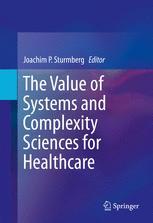
More products digital (pdf, epub, mobi) instant download maybe you interests ...
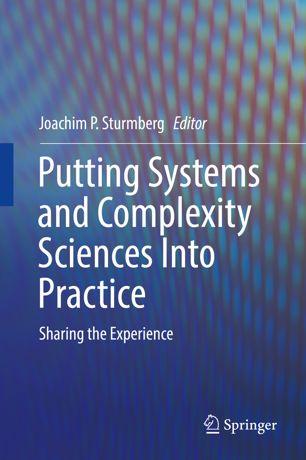
Putting Systems and Complexity Sciences Into Practice
Joachim P. Sturmberg
https://textbookfull.com/product/putting-systems-and-complexitysciences-into-practice-joachim-p-sturmberg/
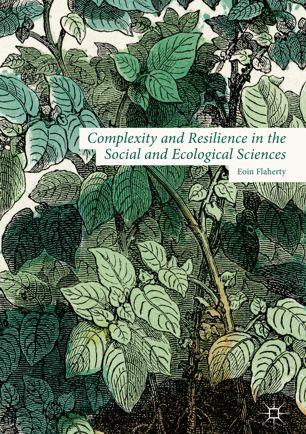
Complexity and Resilience in the Social and Ecological Sciences Eoin Flaherty
https://textbookfull.com/product/complexity-and-resilience-inthe-social-and-ecological-sciences-eoin-flaherty/

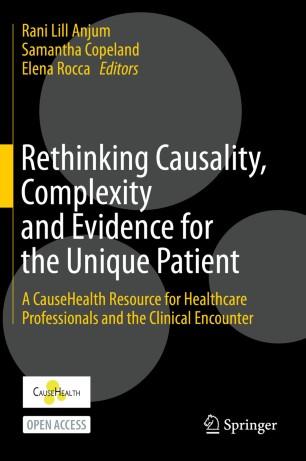
Value Management in Healthcare How to Establish a Value Management Office to Support Value Based Outcomes in Healthcare 1st Edition Nathan William Tierney (Author)
https://textbookfull.com/product/value-management-in-healthcarehow-to-establish-a-value-management-office-to-support-valuebased-outcomes-in-healthcare-1st-edition-nathan-william-tierneyauthor/
Rethinking Causality Complexity and Evidence for the Unique Patient A CauseHealth Resource for Healthcare Professionals and the Clinical Encounter Rani Lill Anjum
https://textbookfull.com/product/rethinking-causality-complexityand-evidence-for-the-unique-patient-a-causehealth-resource-forhealthcare-professionals-and-the-clinical-encounter-rani-lill-
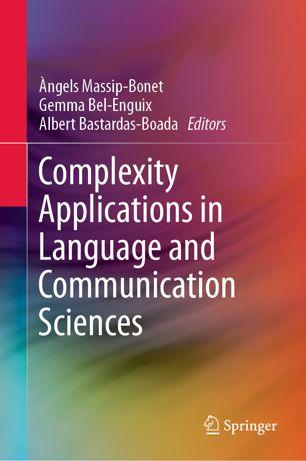
Complexity Applications in Language and Communication Sciences Àngels Massip-Bonet
https://textbookfull.com/product/complexity-applications-inlanguage-and-communication-sciences-angels-massip-bonet/
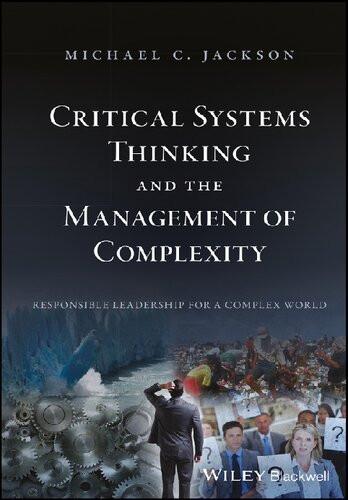
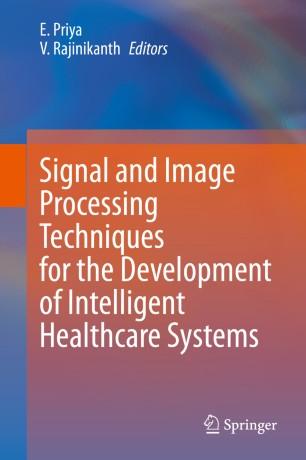


Critical Systems Thinking and the Management of Complexity Responsible Leadership for a Complex World 1st Edition Michael C. Jackson
https://textbookfull.com/product/critical-systems-thinking-andthe-management-of-complexity-responsible-leadership-for-acomplex-world-1st-edition-michael-c-jackson/
Signal and Image Processing Techniques for the Development of Intelligent Healthcare Systems E. Priya
https://textbookfull.com/product/signal-and-image-processingtechniques-for-the-development-of-intelligent-healthcare-systemse-priya/
CPHIMS Review Guide: Preparing for Success in Healthcare Information and Management Systems 3rd Edition Healthcare Information And Management Systems Society (Himss)
https://textbookfull.com/product/cphims-review-guide-preparingfor-success-in-healthcare-information-and-management-systems-3rdedition-healthcare-information-and-management-systems-societyhimss/
Value of Information in the Earth Sciences Integrating Spatial Modeling and Decision Analysis 1st Edition Jo Eidsvik
https://textbookfull.com/product/value-of-information-in-theearth-sciences-integrating-spatial-modeling-and-decisionanalysis-1st-edition-jo-eidsvik/



Joachim P. Sturmberg Editor


The Value of Systems and Complexity Sciences for Healthcare





JoachimP.Sturmberg Editor
TheValueofSystems andComplexitySciences forHealthcare
Editor JoachimP.Sturmberg DepartmentofGeneralPractice
TheUniversityofNewcastle
Newcastle,NSW,Australia
ISBN978-3-319-26219-2ISBN978-3-319-26221-5(eBook) DOI10.1007/978-3-319-26221-5
LibraryofCongressControlNumber:2016930682
SpringerChamHeidelbergNewYorkDordrechtLondon ©SpringerInternationalPublishingSwitzerland2016
Thisworkissubjecttocopyright.AllrightsarereservedbythePublisher,whetherthewholeorpartof thematerialisconcerned,specificallytherightsoftranslation,reprinting,reuseofillustrations,recitation, broadcasting,reproductiononmicrofilmsorinanyotherphysicalway,andtransmissionorinformation storageandretrieval,electronicadaptation,computersoftware,orbysimilarordissimilarmethodology nowknownorhereafterdeveloped.
Theuseofgeneraldescriptivenames,registerednames,trademarks,servicemarks,etc.inthispublication doesnotimply,evenintheabsenceofaspecificstatement,thatsuchnamesareexemptfromtherelevant protectivelawsandregulationsandthereforefreeforgeneraluse.
Thepublisher,theauthorsandtheeditorsaresafetoassumethattheadviceandinformationinthisbook arebelievedtobetrueandaccurateatthedateofpublication.Neitherthepublishernortheauthorsor theeditorsgiveawarranty,expressorimplied,withrespecttothematerialcontainedhereinorforany errorsoromissionsthatmayhavebeenmade.
Printedonacid-freepaper
SpringerInternationalPublishingAGSwitzerlandispartofSpringerScience+BusinessMedia(www. springer.com)
Inmemoryofmylatefather PaulE.Sturmberg(1924–2000) whofirstintroducedmetothenotionof unintendedconsequences.
Preface
Thishasbeenthe 1stInternationalConferenceonSystemsandComplexitySciences forHealthcare,aneventmorethantwodecadesinthemaking.Havingreachedthis landmark,notpossiblewithouttheenthusiasm,passionandpersistenceofthose attendingandthoseunabletodoso,itistimetoreflectonthejourney,aninevitably partofcelebrating firsts.
Eachofushashadtheirownlongandoftenlonelyjourneytounderstand andmakesenseofthemanyobviouscomplexitiesweencounterindailypractice thatcouldnot,cannotandneverwillbeaccountedforbytheprevailingscientific framebasedonreductionism.Werepresentanalternativeframe, holism,onethat describesandstudiesphenomenabasedonthedynamicsoftheinteractionsbetween connectedentities—thelargerthenumberofentities,thegreateristhedimension ofitscomplexity.Collectivelywerepresentalltheknowledgeentitiesrelating to health,thesciencesbasictomedicine,healthcaredelivery,ethics,education, healthcareorganisationsandhealthpolicy.Asindividualagentsinaholisticframe, weareinterconnectedinawebofrelationshipswhoseinteractionsallowustolearn, tocreatenewknowledgeandtofindanswerstoquestionsthathavenotyetemerged.
Beforereadingonreflectforjustamomentonyourownjourneys.
Myjourneyentailstwochildhoodexperiencesandacrisisintheearlyyears asamedicalpractitioner.Ilearntfrommyfather,amechanicalengineer,the notionof unintendedconsequences;hisdesignsofnewmachinerytomakeit possibletobuildveryhighprecisionproducts,likethespindlesforthecanallift atHenrichenburgorthemagnetsforthefirsthadroncollideratCERN,meantthat highlyqualifiedtradesmenwouldlosetheirjobs,andwithitmanufacturingwould loseauniquesetofvaluablebutunderappreciatedskillssolelyresidinginthesemen, somethingthatweighedheavilyonhissocialconscience.TheexposuretoDonella Maedows’ LimitstoGrowth providedadifferentwayofseeingandthinkingthat of interconnectedandinterdependentsystems andtheir nonlinearsystemdynamics
behaviour.Unfortunatelymedicalschoolpushedallofthistotheside,onlytohound meinmyearlycareeringeneralpractice.
Atthetimeofcrisisinmyearlyyears,twoeminentpersonscametomyrescue. IanMcWhinneyhelpedmetounderstandmyroleinhealthcare.Heemphasised theimportanceofunderstandingthecontextualdimensions—sensitivitytoinitial condition—andtheunderlying feedback relationshipsthatcharacterisethepatient’s illnessexperience.1
Complexnaturalsystemsare“particulars”.Tomakegeneralinferencesfromstudiesinthese scienceswemusthavegooddescriptionsofthecontextsinwhichtheywereconducted. ...Acomplex,self-organizingsystemdoesnotrespondtochangeinasimpleunidirectional manner.Reciprocaleffectsandfeedbackloopsarecircular,notlinearprocesses.
EdPellegrinoopenedmyeyestotheepistemologyofmedicineasadiscipline whose essentialfocus isonbothhealthanddisease.2
...theprincipalconceptionofmedicine,health,anddiseasearenecessarilyrelatedto,and acquiretheirmeaningfrom,theepistemologicalfeaturesofclinicalinteraction.Bothhealth anddiseaseareessentialconceptionsofmedicineasadiscipline.Totheobjectionthathealth anddiseasearedefinientiaonlyoforgansystems,onemustcounterwiththelargebodyof evidencethatbothconceptsareevaluative;thatis,theyincludeintheirmeaningthevalues ofpatients,societies,andcultures(p.63).
WhilstPaulCilliersintroducedmetothephilosophicalfoundationsofcomplexity sciences,3 DaveSnowdenprovidedapragmaticframework,theCynefin4 model, toappreciatethedifferentdimensionsofunderstandingwithdifferentlevelsof connectednessbetweenitsagents,theirunderlyingdynamicsandthedifferent approachesrequiredtomeaningfullyengagewithinandbetweenthesediffering domains.5
Systemsandcomplexityscience methodologieshavebeenappliedtoanswer questionsencounteredineverydomainaffectingthehealthprofessions.The chaptersinthese Proceedings describetheapproachesandresultsofhigh-profile researchersfromacrossthedisciplineandshouldserveasencouragementfor especiallyouryoungercolleaguestoengagewith systemsandcomplexitysciences intheirclinicalandresearchwork.
Newcastle,NSW,AustraliaJoachimP.Sturmberg April2015
1 McWhinneyI.‘Anacquaintancewithparticulars...’.FamilyMedicine 1989;21(4):296–298.
2 PellegrinoEandThomasmaD.APhilosophicalBasisofMedicalPractice.TowardsaPhilosophy andEthicoftheHealingProfessions.NewYorkOxford:OxfordUniversityPress;1981.
3 CilliersP.ComplexityandPostmodernism.UnderstandingComplexSystems.London:Routledge;1998.
4 AWelshwordmostcloselymeaning‘placeofbelonging’.
5 KurtzCFandSnowdenDJ.Thenewdynamicsofstrategy:Sense-makinginacomplexand complicatedworld.IBMSystemsJournal.2003;42(3):462–483.
Acknowledgements
Itismygreatpleasuretoacknowledgethewonderfulteamthatmadethisconference possible—HowardFederoff,SonaVasudevan,CarmelMartin,ReneeCrichlow, BeverleyEllis,LaurenWolkoff,BrianCastellani,ElliottCrooke,StewartMennin, MarkSmith,SeanHawkins,MohammedEl-Khatibandthelargeteamofvolunteers whosupportedtheconferenceontheday.Myspecialthanksto Georgetown University and MedStarInstituteofInnovation forhostingthe 1stInternational ConferenceonSystemsandComplexitySciencesforHealthcare andKhristine QuejaforhereditorialsupportoftheseProceedings.
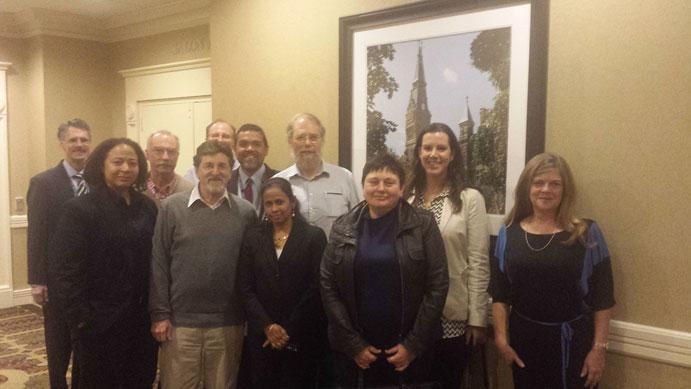
Front :ReneeCrichlow,StewartMennin,SonaVasudevan,CarmelMartinandBeverleyEllis
Back :HowardFederoff,MartinKonitzer,ElliotCrooke,SeanHawkins,JoachimSturmbergand LaurenWolkoff
PartIComplexityinClinicalCare
1“ReturningtoHolism”:AnImperative fortheTwenty-FirstCentury ..............................................3 JoachimP.Sturmberg
2SystemsBiology:UnravellingMolecularComplexityin HealthandDisease .........................................................21 AmritaK.Cheema,MassimoS.Fiandaca,MarkMapstone, andHowardJ.Federoff
3Complicatedvs.Complex,Diseasevs.Illness:Rethinking Diagnosis,Therapy,andRestoringHealth ..............................29 S.LeeHongandSimeonJ.Hain
4ASystemforSystemsEpidemiology:TheExampleof InferencefromAgent-BasedModels .....................................39 AbdulrahmanM.El-Sayed
5CopingwithComplexityandUncertainty:Insightsfrom StudyingEpidemiologyinFamilyMedicine .............................51 MartinKonitzer,WaltraudFink,VilenLipatov, GustavKamenski,andThorstenKnigge
6AnticipationinComplexSystems:PotentialImplications forImprovingSafetyandQualityinHealthcare ........................69 ThomasO.Staiger
7ExtremeVariabilityisTypicalNotNormal ..............................79 BruceJ.West
8MonitoringVariabilityandComplexityattheBedside ................91 AndrewJ.E.Seely,KimberleyD.Newman,andChristopheHerry
9HeterogeneityMediatedSystemComplexity:The UltimateChallengeforStudyingCommonandComplexDiseases ...107 HenryH.Heng,StevenD.Horne,JoshuaB.Stevens, BatoulY.Abdallah,GuoLiu,SarojK.Chowdhury, StevenW.Bremer,KezhongZhang,andChristineJ.Ye
10Multimorbidity:ThroughaGlassDarkly ...............................121 CarmelM.Martin
11ViewingMentalHealthThroughtheLensofComplexityScience ....133 DavidA.Katerndahl
12QuantitativelyDemonstratingtheComplexNatureof IntimatePartnerViolence .................................................147 DavidA.Katerndahl,SandraBurge,RobertFerrer, JohannaBecho,andRobertWood
13Depression:NotJustaTop–DownPhenomenon ........................163 JeanetteM.BennettandJoachimP.Sturmberg
PartIIComplexityandtheHealthcareSystemEthics, OrganisationPolicy,andPolitics
14EthicalComplexitiesinSystemsHealthcare:WhatCare andforWhom? .............................................................177 KevinT.FitzGerald
15SystematicReviews:BeyondCochranetoComplexity .................187 FrancesGriffithsandJaneGoudge
16Agent-BasedModellingofOrganizationalPerformance ...............197 RussellS.GonneringandDavidLogan
17LeadingtheEmergencyDepartmentasaComplex AdaptiveSystem ............................................................205 PaolaCamorlingaandSergioCamorlinga
18TheValueofSystemsandComplexityThinkingtoEnable ChangeinAdaptiveHealthcareOrganisations,Supported byInformatics ...............................................................217 BeverleyS.Ellis
19UsingaTeamApproachtoAddressAvoidableEmergency DepartmentUtilizationandRe-hospitalizationsas SymptomsofComplexityThroughQualityImprovement Methodology ................................................................231 JacquelineMorse,AndrewS.Valeras,DominicGeffken, DanielEubank,A.JohnOrzano,DouglasDreffer, AmandaDeCook,andAimeeBurkeValeras
20AccesstoPrimaryCare:AComplexAdaptiveSystems LensonAcuity ..............................................................239
CarmelM.MartinandDavidEmanuelSurateSolaligue
21“IftheFactsDon’tFittheTheory,ChangetheTheory”: ImplicationsforHealthSystemReform .................................247 JoachimP.Sturmberg
Appendices ........................................................................261 Index
ListofContributors
BatoulY.Abdallah DepartmentofPathology,CenterforMolecularMedicineand Genetics,KarmanosCancerInstitute,WayneStateUniversitySchoolofMedicine, Detroit,MI,USA
JohannaBecho Family&CommunityMedicine,UniversityofTexasHealth ScienceCenteratSanAntonio,SanAntonio,TX,USA
JeanetteM.BennettPh.D. PrograminHealthPsychology,TheUniversityof NorthCarolinaatCharlotte,Charlotte,NC,USA
DepartmentofPsychology,TheUniversityofNorthCarolinaatCharlotte, Charlotte,NC,USA
StevenW.Bremer DepartmentofPathology,CenterforMolecularMedicineand Genetics,KarmanosCancerInstitute,WayneStateUniversitySchoolofMedicine, Detroit,MI,USA
SandraBurge Family&CommunityMedicine,UniversityofTexasHealth ScienceCenteratSanAntonio,SanAntonio,TX,USA
PaolaCamorlinga DepartmentofEmergencyMedicine,UniversityofBritish Columbia,Vancouver,BC,Canada
SergioCamorlinga DepartmentofAppliedComputerScience,Universityof Winnipeg,Winnipeg,MB,Canada
AmritaK.Cheema DepartmentofOncology,GeorgetownUniversityMedical Center,Washington,DC,USA
DepartmentofBiochemistry,GeorgetownUniversityMedicalCenter,Washington, DC,USA
DepartmentofMolecular&CellularBiology,LombardiComprehensiveCancer Center,GeorgetownUniversityMedicalCenter,Washington,DC,USA
SorajK.Chowdhury ResearchDepartment,VAJohnDingellMedicalCenter, Detroit,MI,USA
AmandaDeCook ConcordHospitalFamilyHealthCenter,NewHampshire DartmouthFamilyMedicineResidency,Concord,NH,USA
DouglasDreffer ConcordHospitalFamilyHealthCenter,NewHampshire DartmouthFamilyMedicineResidency,Concord,NH,USA
AbdulrahmanM.El-Sayed DepartmentofEpidemiology,MailmanSchoolof PublicHealth,ColumbiaUniversity,NewYork,NY,USA
DetroitHealthDepartment,CityofDetroit,Detroit,MI,USA
BeverleyS.Ellis HealthInformaticsTeam,SchoolofHealthSciences,Collegeof HealthandWell-being,UniversityofCentralLancashire,(UCLan)Preston,UK
DanielEubank ConcordHospitalFamilyHealthCenter,NewHampshire DartmouthFamilyMedicineResidency,Concord,NH,USA
HowardJ.Federoff DepartmentsofNeurology,GeorgetownUniversityMedical Center,Washington,DC,USA
RobertFerrer Family&CommunityMedicine,UniversityofTexasHealth ScienceCenteratSanAntonio,SanAntonio,TX,USA
MassimoS.Fiandaca DepartmentsofNeurology,GeorgetownUniversityMedical Center,Washington,DC,USA
WaltraudFink ViennaUniversity,DepartmentofPublicHealth,AcademicTeachingPractice,Straning,Austria
KevinT.FitzGerald CenterforClinicalBioethics,GeorgetownUniversity, Washington,DC,USA
DepartmentofOncology,GeorgetownUniversityMedicalCenter,Georgetown University,Washington,DC,USA
DominicGeffken ConcordHospitalFamilyHealthCenter,NewHampshireDartmouthFamilyMedicineResidency,Concord,NH,USA
RussellS.Gonnering MedicalCollegeofWisconsin,ElmGrove,WI,USA
JaneGoudge SchoolofPublicHealth,CentreforHealthPolicy,Universityofthe Witwatersrand,Johannesburg,SouthAfrica
FrancesGriffiths SocialScienceandSystemsinHealthResearchUnit,Division ofHealthSciences,UniversityofWarwick,WarwickMedicalSchool,Coventry,UK
SimeonJ.Hain HeritageCollegeofOsteopathicMedicine,OhioUniversity, Athens,OH,USA
HenryH.Heng DepartmentofPathology,CenterforMolecularMedicineand Genetics,KarmanosCancerInstitute,WayneStateUniversitySchoolofMedicine, Detroit,MI,USA
ChristopheHerry OttawaHospitalResearchInstitute,Ottawa,ON,Canada
SLeeHong HeritageCollegeofOsteopathicMedicine,OhioUniversity,Athens, OH,USA
StevenD.Horne DepartmentofPathology,CenterforMolecularMedicineand Genetics,KarmanosCancerInstitute,WayneStateUniversitySchoolofMedicine, Detroit,MI,USA
DavidA.Katerndahl Family&CommunityMedicine,UniversityofTexasHealth ScienceCenteratSanAntonio,SanAntonio,TX,USA
GustavKamenski ViennaUniversity,DepartmentofPublicHealth,Academic TeachingPractice,Angern,Austria
ThorstenKnigge FamilyPhysician,Hambühren,Germany
MartinKonitzer HannoverMedicalSchool(MHH),DepartmentofFamily Medicine,AcademicTeachingPractice,Schwarmstedt,Germany
KarlLandsteinerInstituteforSystematicsinGeneralMedicine,Angern,Austria
VilenLipatov CompassLexecon,Brussels,Belgium
GuoLiu DepartmentofPathology,CenterforMolecularMedicineandGenetics, KarmanosCancerInstitute,WayneStateUniversitySchoolofMedicine,Detroit, MI,USA
DavidLogan MarshallSchoolofBusiness,TheUniversityofSouthernCalifornia, LosAngeles,CA,USA
MarkMapstone DepartmentofNeurology,UniversityofRochesterSchoolof Medicine,Rochester,NY,USA
SchoolofMedicineandDentistry,UniversityofRochesterMedicalCenter, Rochester,NY,USA
CarmelM.Martin DepartmentofPublicHealthandPrimaryCare,Trinity College,CollegeGreen,KelvinGrove,BrisbaneQld,Dublin,Ireland
JacquelineMorse ConcordHospitalFamilyHealthCenter,NewHampshire DartmouthFamilyMedicineResidency,Concord,NH,USA
KimberleyD.Newman OttawaHospitalResearchInstitute,Ottawa,ON,Canada
A.JohnOrzano ConcordHospitalFamilyHealthCenter,NewHampshire DartmouthFamilyMedicineResidency,Concord,NH,USA
AndrewJ.E.Seely ThoracicSurgery&CriticalCareMedicine,Universityof OttawaandScientist,OttawaHospitalResearchInstitute,OttawaHospital-General Campus,Ottawa,ON,Canada
DavidEmanuelSurateSolaligue MaxPlankInstituteBadNauheim,MBML (MolecularBiologyandMedicineoftheLung),Hessen,Germany
ThomasO.Staiger DepartmentofMedicine,UniversityofWashington,Seattle, WA,USA
JoshuaB.Stevens DepartmentofPathology,CenterforMolecularMedicineand Genetics,KarmanosCancerInstitute,WayneStateUniversitySchoolofMedicine, Detroit,MI,USA
JoachimP.Sturmberg DepartmentofGeneralPractice,SchoolofMedicineand PublicHealth,FacultyofHealthandMedicine,TheUniversityofNewcastle, Newcastle,Wamberal,NSW,Australia
AndrewS.Valeras ConcordHospitalFamilyHealthCenter,NewHampshire DartmouthFamilyMedicineResidency,Concord,NH,USA
AimeeBurkeValeras ConcordHospitalFamilyHealthCenter,NewHampshire DartmouthFamilyMedicineResidency,Concord,NH,USA
BruceJ.West MathematicsandInformationSciencesDirectorate,U.S.Army ResearchOffice,ResearchTrianglePark,Durham,NC,USA
RobertWood Family&CommunityMedicine,UniversityofTexasHealthScience CenteratSanAntonio,SanAntonio,TX,USA
ChristineJ.Ye TheDivisionofHematology/Oncology,UniversityofMichigan ComprehensiveCancerCenter,AnnArbor,MI,USA
KezhongZhang DepartmentofPathology,CenterforMolecularMedicineand Genetics,KarmanosCancerInstitute,WayneStateUniversitySchoolofMedicine, Detroit,MI,USA
Theprevailingmodeofdealingwithcomplexityinclinicalcareissimplification— reducingtheproblemsintotheirconstituentcomponents.Whilethisapproachmay gainvaluableinsightsintothestructureandfunctionofsmallparts,itunfortunately failstoguidethemanagementoftheprobleminthe particularpatient infrontof us,orpatientgroupsinaparticularcontext.Thecontributionsinthefirstpartofthe Proceedings untanglethenotionofcomplexityinherentintheclinicalcontext,and highlighthowtheapplicationofcomplexityscienceshelpsustobetterunderstand, approachandsolvesomeclinicalproblems.
Itishopedthatsomereaderswillbeencouragedtoexplorecomplexityscience approachesintheirareaofinterestandpresenttheirinsightsatthenextmeeting in2016.
Chapter1
“ReturningtoHolism”:AnImperative fortheTwenty-FirstCentury
JoachimP.Sturmberg
Eachofushashadtheirownlongandoftenlonelyjourneytounderstandand makesenseofthemanyobviouscomplexitiesweencounterindailypracticethat couldnot,cannotandneverwillbeaccountedforbytheprevailingscientificframe basedonreductionism.These Proceedings presentanalternativeframe—holism thatdescribesandstudiesthedynamicsoftheinteractionsbetweenconnected entities.Thelargerthenumberofentities,thegreaterthedimensionofcomplexity. Collectively,theauthorsofthe Proceedings representalltheknowledgedomains relatingto health,thesciencesbasictomedicineandhealthcarepractices,ethics, educationforworkinthehealthprofessions,healthcareorganisations,andhealth policydevelopment.Asindividualagentsinaholisticframe,weareinterconnected inalocalwebofrelationshipswhoseinteractionsleadtoadaptiveactionswhich leadtosystem-widechangeandlearning,creatingnewknowledgeandpractices andlookingfornewquestionsthathavenotyetbeenaskedandtheadaptiveactions whichhaveyettoemerge.
Itwasthe constraints oftheprevailingreductionistwayofthinkinginmedicine andhealthcare[1]thatprecipitatedmycrisis.Ihadtowidenmygazetoembrace thecontextualinterdependenciesofthemultiplefacetsthatconstitutea health deliveringhealthcaresystem(Fig. 1.1).
Ipostulateaframeworkforunderstandinghealthandhealthsystemsgrounded inthe principles ofsystemsandcomplexityscience.Thepapermakesampleuseof narrative and metaphoricalimages toillustratesystemstructuresanddynamics.
Itaddressesfirstlysomeoftheepistemicandhistoricaldevelopmentsthat limittheprevailing“restricted”scientificframeworkbeforeoutliningissuesand J.P.Sturmberg( )
DepartmentofGeneralPractice,SchoolofMedicineandPublicHealth,TheUniversityof Newcastle,Newcastle,POBox3010,Wamberal,NSW2250,Australia
e-mail: jp.sturmberg@gmail.com
©SpringerInternationalPublishingSwitzerland2016
J.P.Sturmberg(ed.), TheValueofSystemsandComplexitySciences forHealthcare,DOI10.1007/978-3-319-26221-5_1
Health
Medical
Remuneration Litigation
Competing Commercial Concerns
Patients Doctors
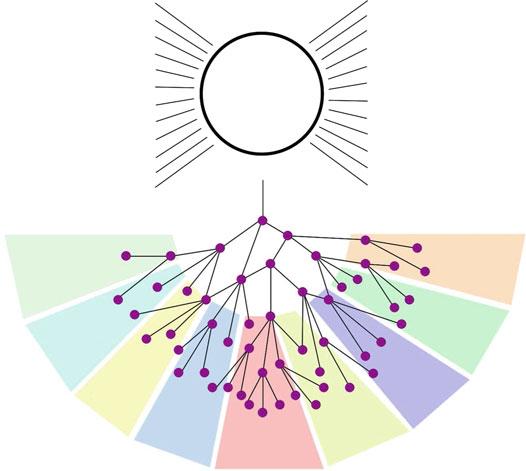
HEALTH SYSTEMS that deliver HEALTH
Health Insurers Illness
Nurses
Paychologists
Physiotherapists
Dentists
Other Health Professionals
Public Health Activists
Consumer Groups
Health Bureaucrats
Policy Makers
Fig.1.1 Thecomplexitiesofa HealthSystemthatdeliversHealth.Ahealthsystemhasmany competingagentsandissues,allofwhichareinterconnectedinacomplexnetworkofsubsystems andtheirvarioussub-,subsub-etc.systems
challengesfortherenewalof healthcare1 thatmeetaperson’sinterdependentneeds toachieve health.Theremainingchaptersofthese Proceedings dealwithsomeof theparticularnodesofa health-delivering healthcarenetwork.
1.1Models:MentalRepresentationsofReality
Reductionismandcomplexitysciencesaretwowaysofexploringissues,each approachbasedonadifferentmentalmodel.Modelsaredefinedas“anexternal andexplicitrepresentationofpartofrealityasseenbythepeoplewhowishto usethatmodeltounderstand,tochange,tomanageandtocontrolthatpartof reality”[2].Einsteinalreadypointedoutthatevenphysicalmodelsaretheproduct ofourmind,andWittgensteinalludedtothefactthatourideasdeterminethescope ofourobservationsandtheirrepresentation.
Ourmentalmodelsreflectaparticularwayofseeingandthinkingabout reality.Reductionismbreaksrealityintopartsandthenstudiesthepartstoseek understandingofthewhole.Complexitysciencesexploretherelationshipsand
1 Notethedistinctionbetween“healthcare”,theactivity,and“healthcare”theorganisationalunit.
Table1.1 Reductionistand complexityframeworksfor problemsolving
Confirmatorymodels
Generalrulesandcontrol
Causeandeffect
Explainandpredict
Exploratorymodels
Contextandinsight
Meaningandpurpose
Describeandunderstand
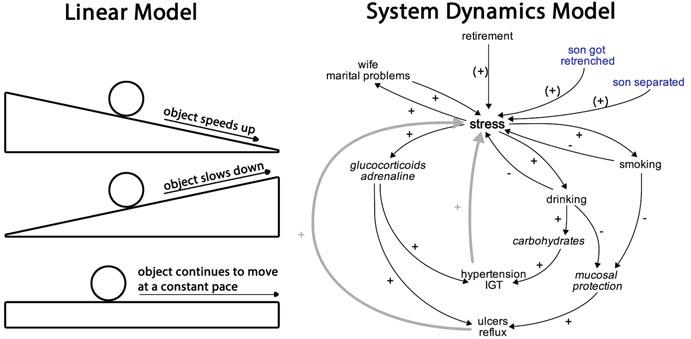
Fig.1.2 Linear(Newtonian)modelofacceleration(left )andnon-linearsystemdynamicsmodel (right )
interdependenciesamongmembersofthesystemunderparticularconditions.They aredifferentwaysofaskingquestionsandapproachingproblemsthatcanbe summarisedasconfirmatoryandexploratory(Table 1.1),andarisefromdifferent setsofunderlyingassumptions(seeFig. 1.2).Neithermodecanprovideacomplete pictureofreality[3],however,asGorgeBoxpointedout,while“...allmodelsare wrong,...someareuseful”[4].
Lifeconsistsofinterconnectednetworks,aninescapablereality.Werecognize complexadaptivephenomenainnatureandinsociety;however,wegenerallylack knowledgeandunderstandingaboutthedynamicsofcomplexadaptivesystems (CAS).Accordinglyweattempttoreducecomplexproblemsintosimpleonesand thusendup,inRussellAckoff’swords, withsimple—ifnotsimple-mindedsolutions [5].Howcanthisbe?
Dörner[6]exploredthisquestionandfoundthatthehumanbrainhasalimited capacitytodealwithmorethanafewthings(onaverage 7 ˙ 2)atanyonetime. Wehavedifficultiestoeasilydetectconnectionsbetweenseeminglyunconnected objectsorfacts,andwecannoteasilyanticipate—especiallynon-linear—behaviours morethanasteportwoahead.Successfullydealingwithcomplexproblems requirestheskilltoobservedynamicchangesovertime,tounderstandtheobserved dynamics,andto respondanticipatorily insmallincrements(Table 1.2).
Table1.2 Characteristicsofsuccessfulproblemsolvers(adaptedfromDörner[6])
•Makemoredecisions
•Considernotjusttheprimarygoalofanygivenmeasurebutalsoitspotentialeffecton othersectorsofthesystem
•Act“morecomplexly”.Whenmakingdecisionstheytakedifferentaspectsoftheentire systemintoaccount,notjustoneaspect
•Testhypothesesfrequently
•Askmore why questions(asopposedto what questions),i.e.askmore exploratory than descriptive questions
•Aremoreinterestedinthecausalrelationshipsbehindevents,inthecausalnetworkthat madeup...,digdeeperintheiranalyses
•Usesimilardecisionstrategiesovertime
•Focusonthesametopicswithintheproblemarea
•Reflectmoreonownbehaviour,commentcriticallyonit,andmakeeffortstomodifyit
•Morestructuredbehaviour,thinkingoutloud,morefrequentlydisplayingsequencing patternslike“FirstIhavetodealwithA,thenwithB,butIshouldn’tforgettothink aboutCaswell”
1.2DistributionsinLivingSystems
Thesecognitivedifficultiesarecompoundedbyaprevailingperceptionthatobjects inthelivingworldbehaveinmechanisticwaysthatarepredictablebasedon theaverageobservedbehaviour.Itisassumedthatanychangeininputwill resultinaproportionalchangeinoutput.Mathematicallythesebehavioursare expressedasmeansandstandarddeviations(Gaussdistributions).Howeverobjects inthelivingworldtypicallyfollownon-linearpatterns(Fig. 1.3).Firstly,objects inthelivingworldaredistributedinalongtailorinversepower-lawdistribution (Paretodistributions).Secondly,theirbehaviourtoaninputtypicallyresultsin disproportionaloutputs.Mathematicallythesebehavioursaredescribedbythe median[7, 8].
1.3CharacteristicsofCAS
CASconsistofanumberofagentsthatarelinkedinanetworkedfashion.Implicitly allsystemsarenested—everysystemsimultaneouslyispartofalargersystem (i.e.itisasub-system)andalargersystemcontainingsmallersystems(i.e.itisa supra-system)(Fig. 1.4).CASareboundedwhichprovidesconstraintsthatlimitthe possibilitiesofinteractionsbetweenagents.Allinteractionsoccurwithoutexternal supervisoryinfluence.Theinteractionsarerecursiveandfedbackoneachother tocreatefeedbackloopswhichcanbeeither“self-reinforcing (viciouscycles)” threateningthestabilityofthesystemor“self-stabilising”thereforemaintaining it.BehaviourinCASisemergentandhencenon-deterministic,i.e.theresulting
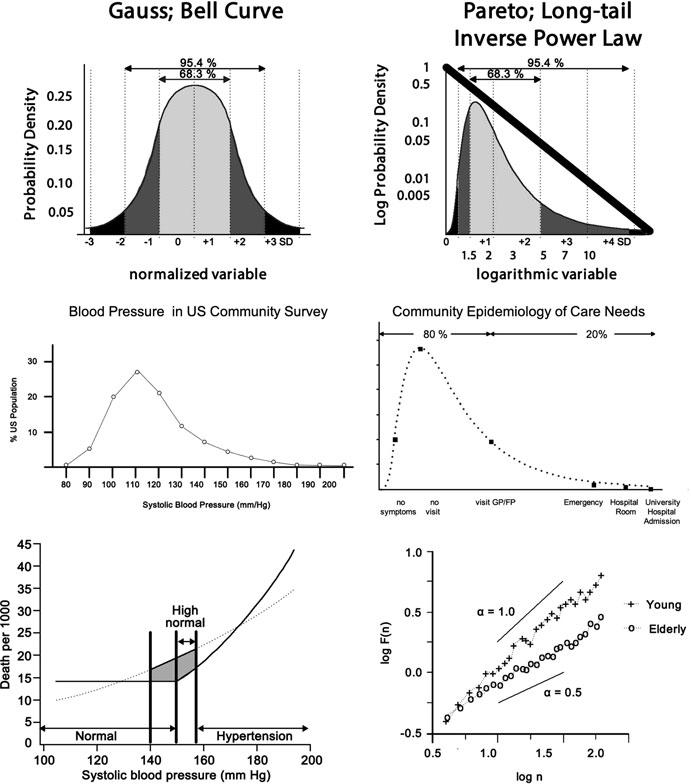
Fig.1.3 ComparisonbetweenGaussandParetodistributions(top).Bloodpressuredistributionin theUScommunitysurvey1999(middleleftpanel)[9],careneedsfromWhite’scommunityhealth study1961(middlerightpanel)[10],absolutemortalityandbloodpressurefora50-year-oldfrom theFraminghamstudy(bottomleftpanel)[11]andF(n)bylog(n)ofgaitvariabilityovertimeofa youngandelderlyshowingthedecreasingscalingexponent ˛ withageing(rightpanel)[12]
outcomescannotbepreciselypredicted.Table 1.3 providesanoverviewofdefinitionsofthekeytermsofsystemssciencesandtheireffectsonCASbehaviours.
Complexityincreasesexponentiallywiththenumberofagentsinteracting—a systemwithtenagentscanhaveamaximumof45differentconnections;increasing thenumberofagentsto1000(a100-foldincrease)resultsin499,500different connections(a10,000-foldincrease)—apowerlawdistribution.
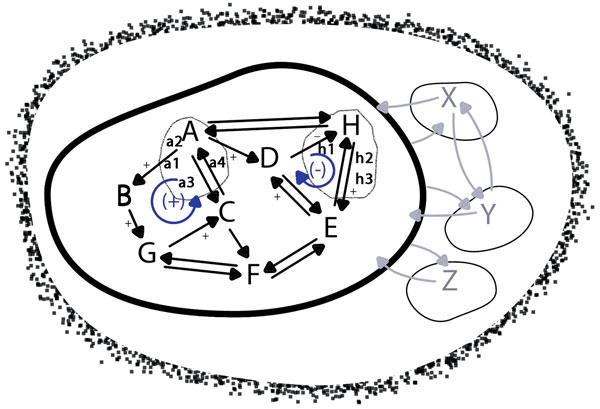
Fig.1.4 Systemsarecollectionofagents(A–H)containedwithinapermeableboundary(black circle),whereeachagentrepresentsasmallersub-systems(a1–a4)andispartofalargersuprasystem(dottedline).Threeconditionsaffecttheself-organisingdynamicsofsystems:(1)The container(theboundaries)andtheextenttowhichtheyareincreasedordecreased;(2)thedegree ofdifferencesamongtheagentsthatarewithintheboundariesand(3)thenatureanddynamicsof theexchangebetweentheagentsinvolved.Whilstsystemsareboundedtheyreceiveinputsfrom andprovideoutputstoothersystems(X–Z)withinalargersupra-system
1.4Holism
Holism,incolloquialterms,isdescribedas thewholeismorethanthesumofits parts—aphraseascribedtoAristotle2 andreintroducedbyChristianvonEhrenfels, philosopherandfatherofGestaltpsychology,inthelatterpartsofthenineteenth century.Ehrenfelsshowedthatonecanassembleanumberofpartsindiverseways, givingthemformsthatexhibitpropertiesnotcontainedintheparts.Todaywerefer tothisobservationas non-separability:thestateofthewholeisnotconstitutedby thestatesofitsparts—ormoreprecisely, thewholeismore anddifferent thanthe sumoftheparts. Philosophyofsciencejuxtaposestwoapproachestostudyingholismdescribed in“TheStanfordEncyclopediaofPhilosophy”asmethodologicalholismand methodologicalreductionism.
2 Inthecaseofallthingsthathaveseveralpartsandinwhichthewholeisnotlikeaheap,but isaparticularsomethingbesidestheparts,theremustbesomesuchunitingfactor.[Aristotle. (1952).Metaphysics(R.Hope,Trans.).AnnArbor,MI:UniversityofMichiganPress.(BookEta, 1045a8–10)].
MethodologicalHolism:Anunderstandingofacertainkindofcomplexsystemisbest soughtatthelevelofprinciplesgoverningthebehaviorofthewholesystem,andnotat thelevelofthestructureandbehaviorofitscomponentparts.
MethodologicalReductionism:Anunderstandingofacomplexsystemisbestsoughtatthe levelofthestructureandbehaviorofitscomponentparts. (http://plato.stanford.edu/entries/physics-holism/)
Whilstinphysicsthemethodologicalargumenthaslongbeensettledinterms oftheformerapproach,thisisnotyetthecaseinthemedicalandsocialsciences. Whileitcertainlyishelpfultounderstandthestructureandfunctionofanindividual cell,itisnotpossibletoinfertheorderedinteractionsofcellswithinanorganor
Table1.3 Propertiesofcomplexadaptivesystems(CAS)
Non-linearity
•resultsnotproportionaltostimulus
•canleadtosuddenmassivechangesofthesystem
•sensitivetoinitialconditions
Opentoenvironment
•asystemcontinuouslyinteractswithitsenvironment,e.g.
•exchangingmaterial,energy,people,capitalandinformation •non-linearresponsestotheexternalenvironmentcanleadtosudden massiveandstochasticchanges
Self-organization
•reliesonthreebasicprinciples
ı recursivefeedback(positive&negative)
ı balanceofexploitationandexploration(exploitationoffamiliarityandexplorationofnovelty)
ı multipleinteractions
Emergence
Patternofinteraction
Adaptationand evolution
•occurswhenanumberofsimpleentities(agents)operateinan environmentwhoseconditionspromoteself-organisationresulting intheemergenceofmorecomplexbehavioursasacollective
•arisesfromintricatecausalrelationsacrossdifferentscalesand feedback—interconnectivity
•theemergentbehaviourorpropertiesarenotapropertyofany singlesuchentity,norcantheyeasilybepredictedordeducedfrom behaviourinthelower-levelentities:theyareirreducible
•differentcombinationsofagentsleadtothesameoutcome,or
•thesamecombinationofagentsleadstodifferentoutcomes
•changesinvolvethewholesystemandarenotrestrictedtoafew measurablefactors
•adaptationleadstoanewhomoeostasiswithnewdynamicinteractions
Co-evolution
•eachagentintheexchangeischanged
•paralleldevelopmentofasub-systemwithnewcharacteristicsand dynamics
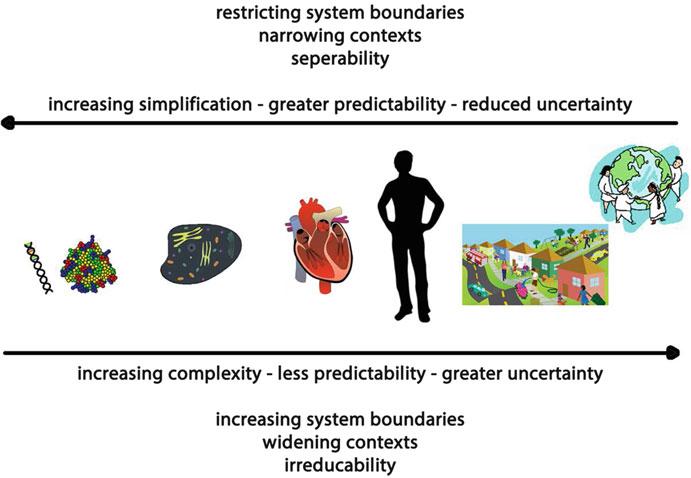
Fig.1.5 Theinterrelationshipbetweenreductionistandholisticperspectives
thedisorderedbehaviourofcellsinatumourfromtheunderstandingofasingle malignantcell.Similarlyunderstandingtheattitudesandbehavioursofanindividual persondoesnotinferthefunctionofagrouporsociety.Obviouslythereverse inferenceisnotpossibleeither(Fig. 1.5).
Understandingthewholearisesfromstudyingthedynamicsoftheinterconnectionsbetweenitscomponentparts,aninsightthathasledtotheemergenceofnew academicfieldslikesystemsbiology,psycho-neuro-immunology,systemsmedicine andnetworkmedicine.
1.5Re-framingHealth
Howcanweunderstandhealthandhealthcarefromaholism/complexity perspective?
1.5.1HealthasaDynamicEntity
ThemostwidelyrecogniseddefinitionofheathisthatoftheWHO: Healthisastate ofcomplete,physical,mentalandsocialwell-beingandnotmerelytheabsenceof
diseaseandinfirmity [13].Thisdefinitionpresentsalargelystaticandidealised pictureandstandsincontrasttothedynamicnotionssuggestedbymanyother thinkersoverthelast100years[14].
Contrastthiswithjustthreedynamicallyfocuseddefinitions:
•Illichpointedtohealthasapositivestatethatdynamicallyspansacrossthestages oflife—Theabilitytoadapttochangingenvironments,togrowingupandto ageing,tohealingwhendamaged,tosufferingandtothepeacefulexpectationof death [15];
•Ingstademphasisedindigenouspeople’sexperienceofhealthasaninterdependentsenseofintegrity,dignityandcommunalandenvironmentalbelonging— Healthdependsonmanyinterconnectedaspectsoflife:belongingtoone’slocal environment/land,thesenseoffreedom,culturalandspiritualbelonging,andthe senseofdignityandsecurity [16];and
•Husserlstressedtheholisticabilitytofunctionwellinone’slife—Healthisa holisticabilitytorelateproperlytoandfunctionwellinthewholelife-worldin allitsaspects,anddiseaseadisturbanceofthisability,onanyofavarietyof levelsorinanyofavarietyofdimensions [17].
1.5.2HealthandDis-easeasExperientialStates
Theseconsiderationsalsoentailthathealth,likedisease,aresubjectiverather thanobjectivestates,orasPerFugelli[18]putit,the“objectiveofdisease” onlyexistswhenyouexperienceit.3 Wehaveseenamarkedshiftfromthe etymologicaloriginsofthesetermsovertime.Healthcomesfromtheold-English hal meaningwhole;disease, des—withoutand aise—ease,meaningtobe“without ease”,hencebetterspelledas“dis-ease”reflectingtheexperienceofdiscomfort, inconvenienceanddistress.Themodernmeaningofdiseaseasanobjective pathological/pathophysiologicalstatehasmajorimplicationsforresearch,thepraxis ofhealthcareandtheplanningofhealthservicesandpolicy.
Howdowerecognisetheexperienceatthephysiologicallevel?
JohannesPeterMüller,thefatherofmodernphysiology,notedthatexternal experienceslikepressureonourskinaretransmittedviasensorynervestoourbrain wheretheygettranslatedtoprovideuswiththeawarenessofthestimulus.Inhis 1840 HandbookofHumanPhysiology heputitthisway:
Sensoryperceptionisnottheresultofthetransmissionofaqualityorstateoftheexternal objectstoconsciousness,butthetransmissionofaqualityorastateofasensorynerve elicitedbyanexternalstimulustoconsciousness.Thesequalities,whicharedifferentinthe varioussensorynerves,arethequalitiesofthesenses[19].
3 Theexactquoteis: ...diseasedoesnotexist,onlytheexperienceofdisease [does].
Another random document with no related content on Scribd:
anchor on a boat is to run the line through a pulley at the bow and fasten the end of it to a cleat, near the seat of the person handling the craft. Care must be taken, in a canoe or small boat, that sufficient line is provided to reach the bottom of the anchorage, as otherwise the craft may be overturned.—Contributed by B. E. Dobree, Battleford, Sask., Canada.
¶The use of gasoline instead of turpentine for a thinner will prevent the sagging of colors in striping.
Oiler for a Hand-Drill Press
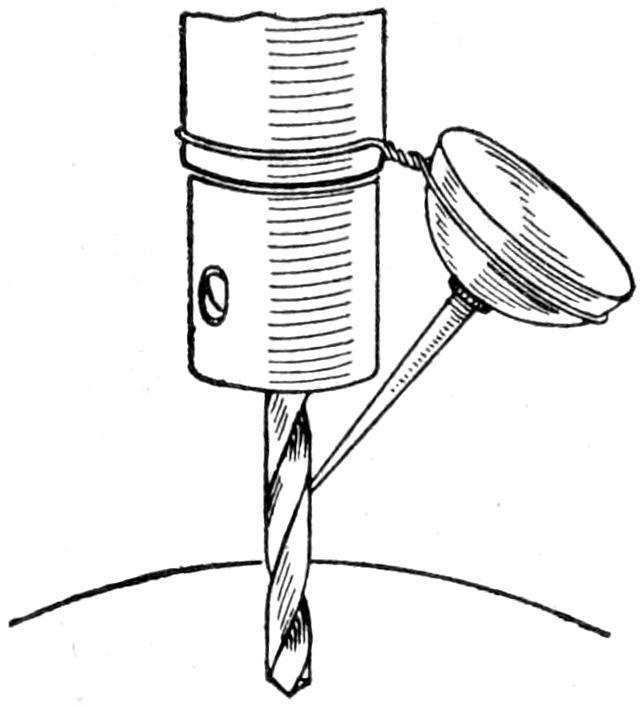
On stationary hand-power drill presses, where both hands are required to turn the crank and hold the work, some means must be provided for applying lubricant to the drill, or the machine would have to be stopped from time to time to apply the oil. A very handy arrangement, for pouring the oil on automatically, is to make a support of wire to hold an oilcan, as shown. This will provide a slow
and constant dropping of oil on the bit.—Contributed by Bert Verne, San Diego, Cal.
Bearing for Playground Swings
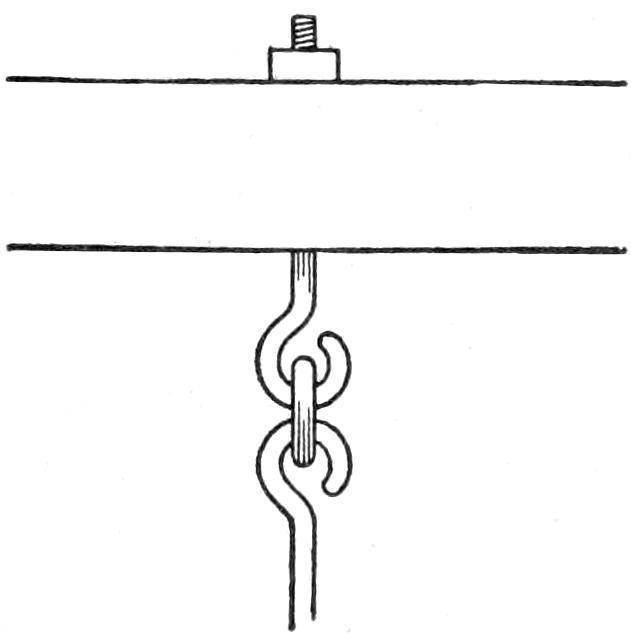
To have the playground swing work easily and without friction make the hangers as shown in the sketch. The ring in the hooks produces a slight rolling action and gives the swing a free motion.—
Contributed by Edwin J. Bachman, Jr., Fullerton, Pa.
Die in a Bottle
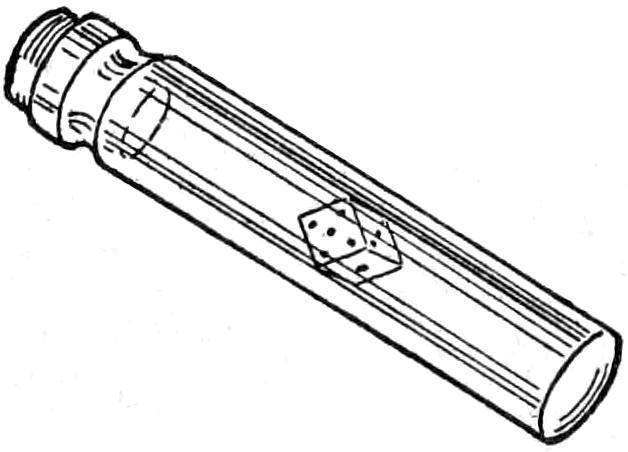
The die is made of cork and the spots painted white. A small round bottle is procured, the die is placed in it and the bottle is filled with water. Be sure to have enough water to prevent any air bubbles when it is corked tightly. The cork is then sealed in the bottle. If there is an air bubble, the cork die will not work well. If the bottle is held bottom up, the cork die will spin around and float up against the bottom of the bottle where the number of spots can be seen. It is impossible to manipulate the die to turn up any desired spots, this being left entirely to chance. A number of bottles can be prepared so that any of the dice games can be played.— Contributed by Henry J. Marion, Pontiac, Michigan.
Small Hook for Hanging a Picture
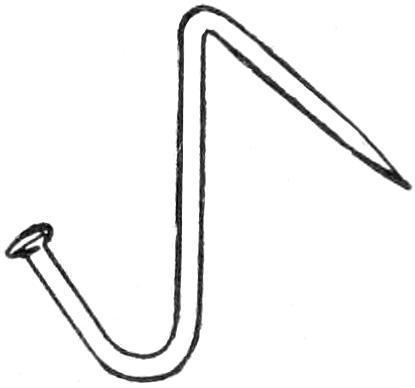
After an unsuccessful attempt to hang a small picture with a common pin, I devised the following method: After bending about ³⁄₈ in. of the point on an ordinary pin to an angle of about 45 deg. and bending up the other end in the opposite direction to form a hook, I drove the point on a downward slant into the wall. It went in easily and did not mar the plaster. When making a test I found that the hook would readily support a weight of several pounds.—Contributed by C. P. Smith, E. Radford, Va.
Covering Hinge Wings
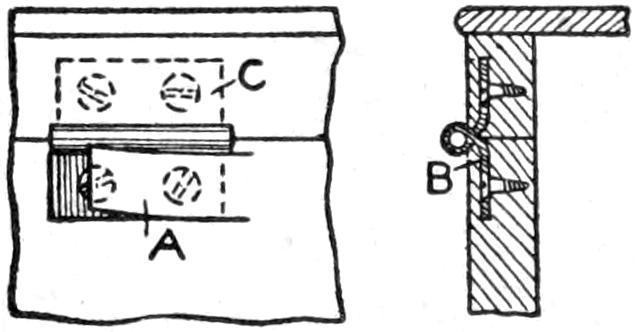
In making fancy boxes where ordinary hinges are used, a much neater job can be done if as much of the hinge as possible is covered. This can be done by carefully raising a sliver with a sharp chisel as at A. The wings are bent at an angle, as shown at B, and are then set in place, as shown at C. The sliver is carefully glued back in place over the hinge wing, and the surface is leveled with sandpaper.
¶A bit of rubber insulation stripped from an electric wire makes an excellent holder for a scarfpin.
How to Make Hammocks
B� CHARLES M. MILLER
PART I—A Twine Hammock
Cord hammocks may be made in two or more different ways, the knots being formed by the simple overhand tie, Fig. 1; the flat reef knot, Fig. 2; the Solomon’s knot, Fig. 3, or by the triple throw-over, Fig. 4; or they can be knotted by the process known as netting, Fig. 5, in which a special needle, or shuttle, is used.
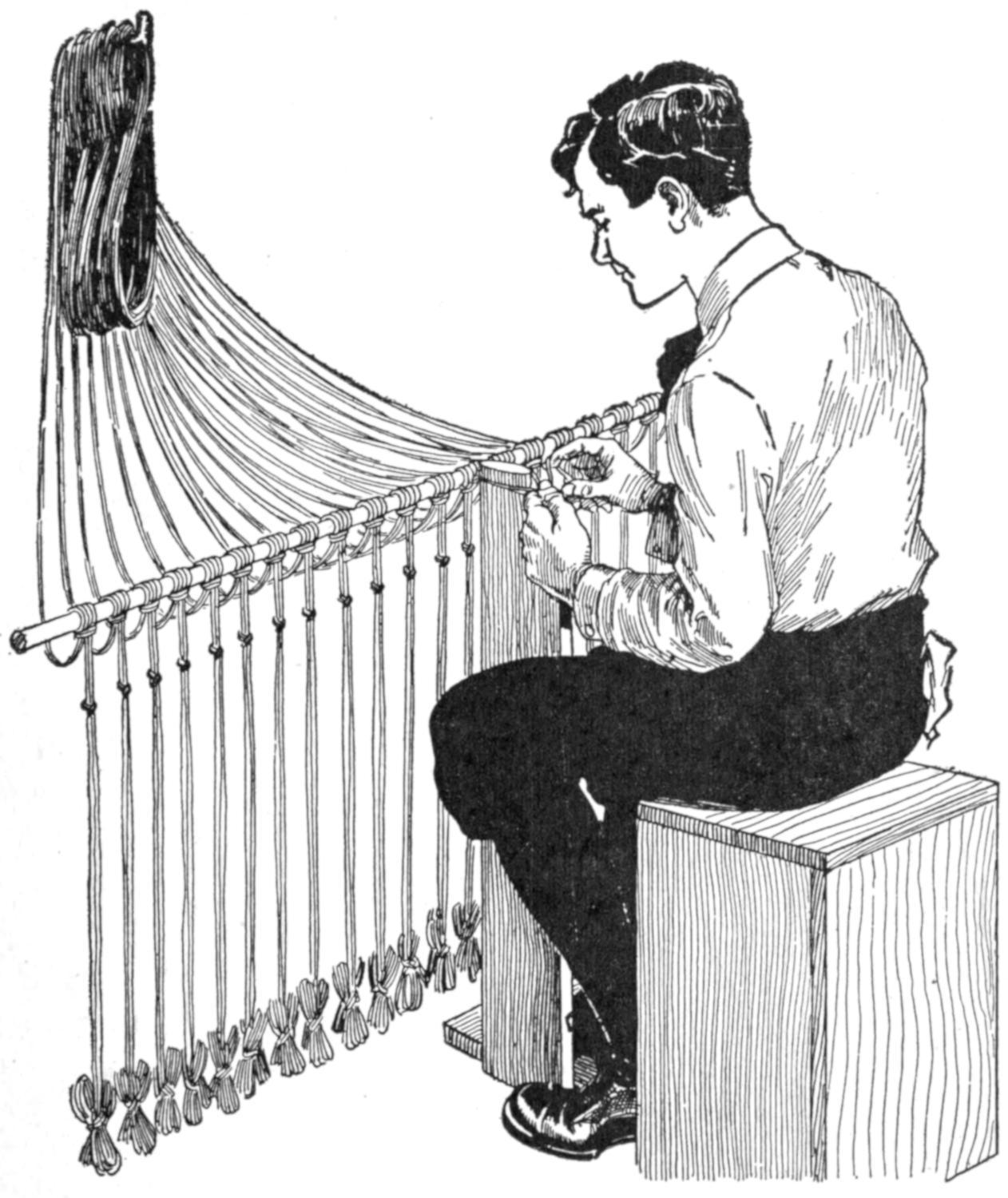
When Making a Hammock With the Simple Overhand, Flat Reef, or Solomon’s Knot, Loop All the Pairs of Cords at the Center about a Rod
In using any one of the first three methods of making the knots it is necessary to have cords arranged in pairs and long enough to reach from one end of the hammock to the other, allowing only sufficient
length for the take-up in tying the knots and the spread of the meshes. The overhand knot is large, and the Solomon’s knot is a little unwieldy, but is considered more beautiful when tied. The flat reef knot is small, is easily tied and will not slip. The netting process has a good knot and has the advantage of a short single cord, as the meshes are made independently and the cord is carried on the netting needle.
It is a great advantage, when making a hammock with the simple overhand, the flat reef, or the Solomon’s knot, to loop all the pairs of cords at the center about a rod, Fig. 6—which may be any stick such as an old broom handle—knotting from the center toward each end, one side being tied, and then the other. When the first pairs are being tied, the opposite ends should be looped up together out of the way. Even half the length of a hammock makes a long cord to be drawn through each time a knot is tied, and each string can be wound about the fingers into a little bundle and secured with a half hitch, using the same cord, and left hanging, as shown in Fig. 7, allowing sufficient cord free to throw large loops in the tying, and to make about 10 additional meshes. About 3 ft. would be a good length to be left free.
It will be necessary to have 24 pairs of cords—48 cords in all— each 18 ft. long to make a hammock by the first two methods of tying the knots. Seine twine of medium-hard twist and 24-ply can be obtained from a store carrying sporting goods, and is about the best material to use for this purpose. When these pairs of cords are looped on the center rod, and the rod has been anchored to a wall, as shown in Fig. 8, begin by placing the mesh stick, or rather the mesh post, Fig. 9, between the first pair of cords, A and B, at the left end of the center rod, as in Fig. 8 and Fig. 6. The simple device illustrated in Fig. 9 is very useful for tying any one of the three firstdescribed knots. The device needs no explanation other than the illustration. It will be seen that there are two sizes on the top of the post; the smaller is for the first time across only The mesh post should be of convenient height for a person when sitting on an ordinary chair. One foot rests on the base as the tying proceeds, but there is no pulling over, as the tie draws both ways on the post, this also doing away with the pull on the center rod.
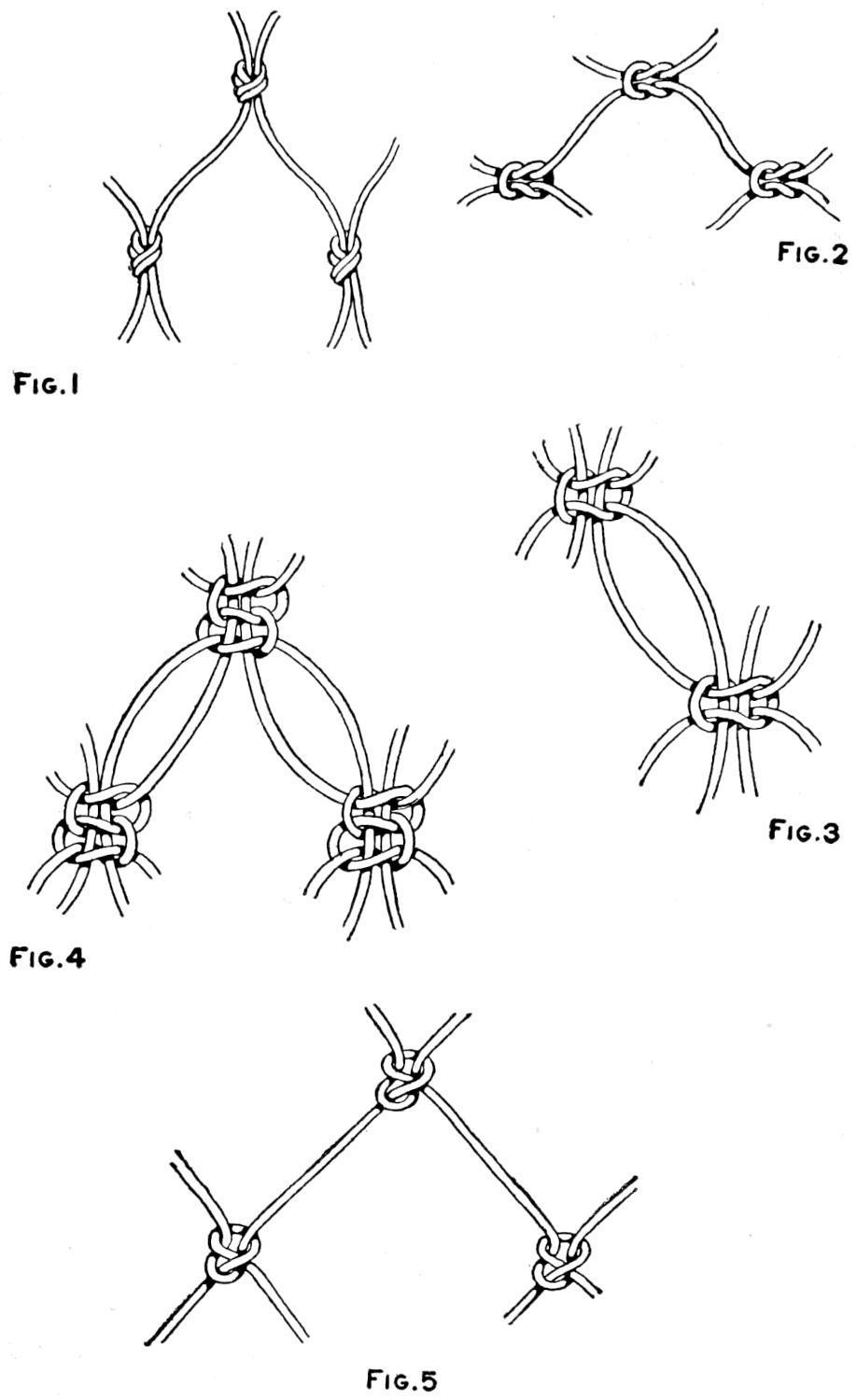
F�� 4 F�� 3
F��. 5
The Simple Overhand, Flat Reef, Solomon’s Knot, Triple Throw-Over, and Netting Ties
The cord to the right, B, is taken in the right hand and thrown over the left cord A, Fig. 8, and is held by the left hand. The left cord A is then tucked down behind the right, as shown in Fig. 10 If the right cord goes over in making the first loop, the same cord B must also go over in the second throw, as in Fig. 11, in order to have a proper square knot that will not slip. The end of A is then tucked under B, as shown by the dotted lines. This makes a very serviceable knot for the hammock, but can be also used for other purposes. The knot is shown in Fig. 2. Draw it up tightly, very hard, for knotting is not worth much if it is not tied well.
In case the simple overhand knot is preferred, the mesh post is placed between the first pair as before, and cords A and B are brought to the front as in Fig. 12, but are carried parallel into a large loop that is thrown over as illustrated, then tucked up through as indicated by the dotted lines. The thumb and first finger of the left hand now slide up to the point P, while the right hand pulls up the loop as it nears the finish, the thumb and first finger crowding the loop down hard against the mesh post. The small part is used for the first row across. The knot formed is shown in Fig. 1.
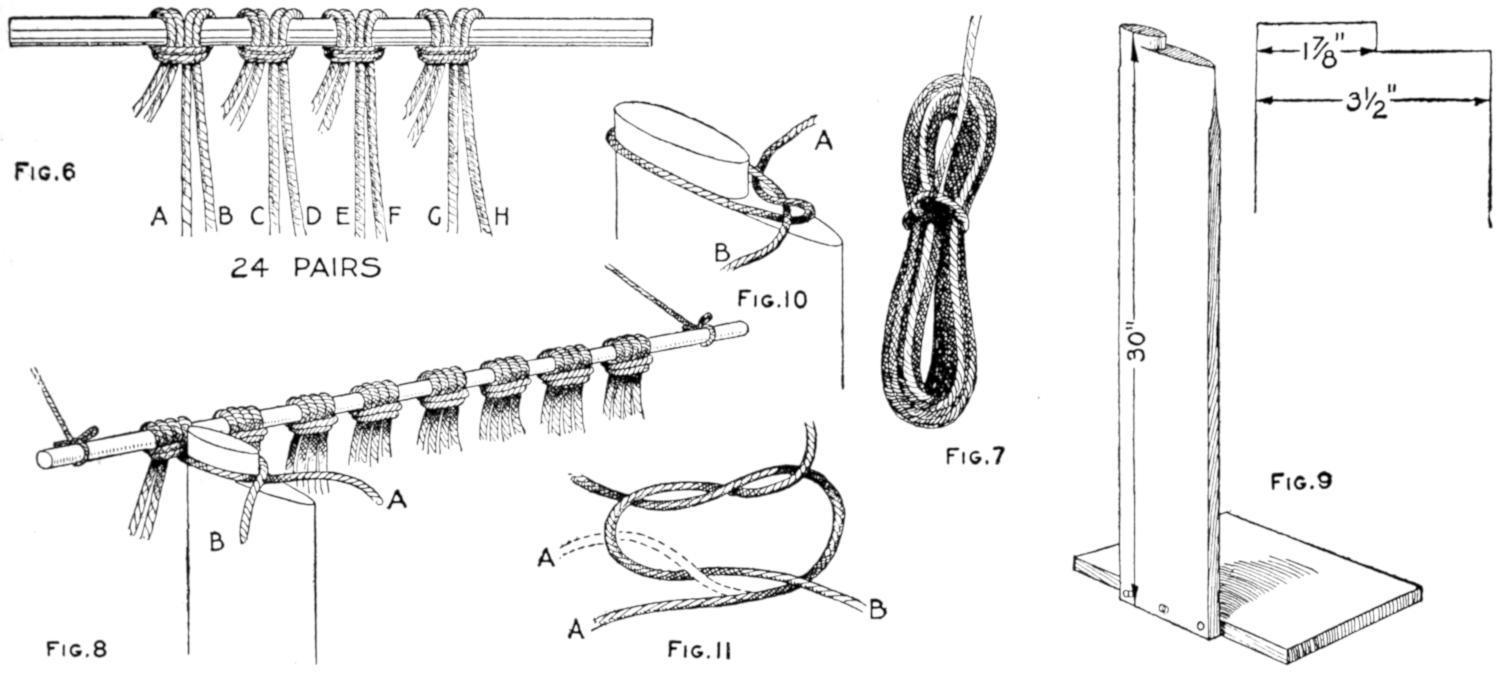
6 F��. 10
8 F�� 11
7
9
The Mesh Post Has Two Sizes on Its Upper End, the Smaller for Knotting the First Row of Meshes, and the Other for the Remaining Rows. This Illustration Also Shows the Manner of Tying the Knots
After tying the first pair of cords using the knot preferred, slip the first mesh so made off the tying post and place the post between C and D, which is the next, or second, pair. Tie the second pair and pass on to the third pair, which is E and F. Continue moving and tying until all the 24 pairs of cords have been similarly knotted in their first mesh. The last knotting will be the twenty-fourth pair, which is represented by the cords marked Y and Z. Instead of tying cords of the same pairs on the return trip across, one cord Y of the twentyfourth pair is tied with one cord X of the twenty-third pair, and the other cord W of the twenty-third pair is tied with the cord V of the twenty second pair, and so on across the series.
On the second row of tying, the post is first placed between cords Y and X and they are knotted together, but instead of tying about the small part of the post the larger size is used. After cords Y and X have been tied, cords W and V are combined. It will be seen that this is tying the pairs together instead of combining the two cords of the same pair. The third time across the combinations are the same as
in the first row The large mesh is used on all but the first row The alternations of rows is continued until the cords are tied to within 2¹⁄₂ ft. of the end.
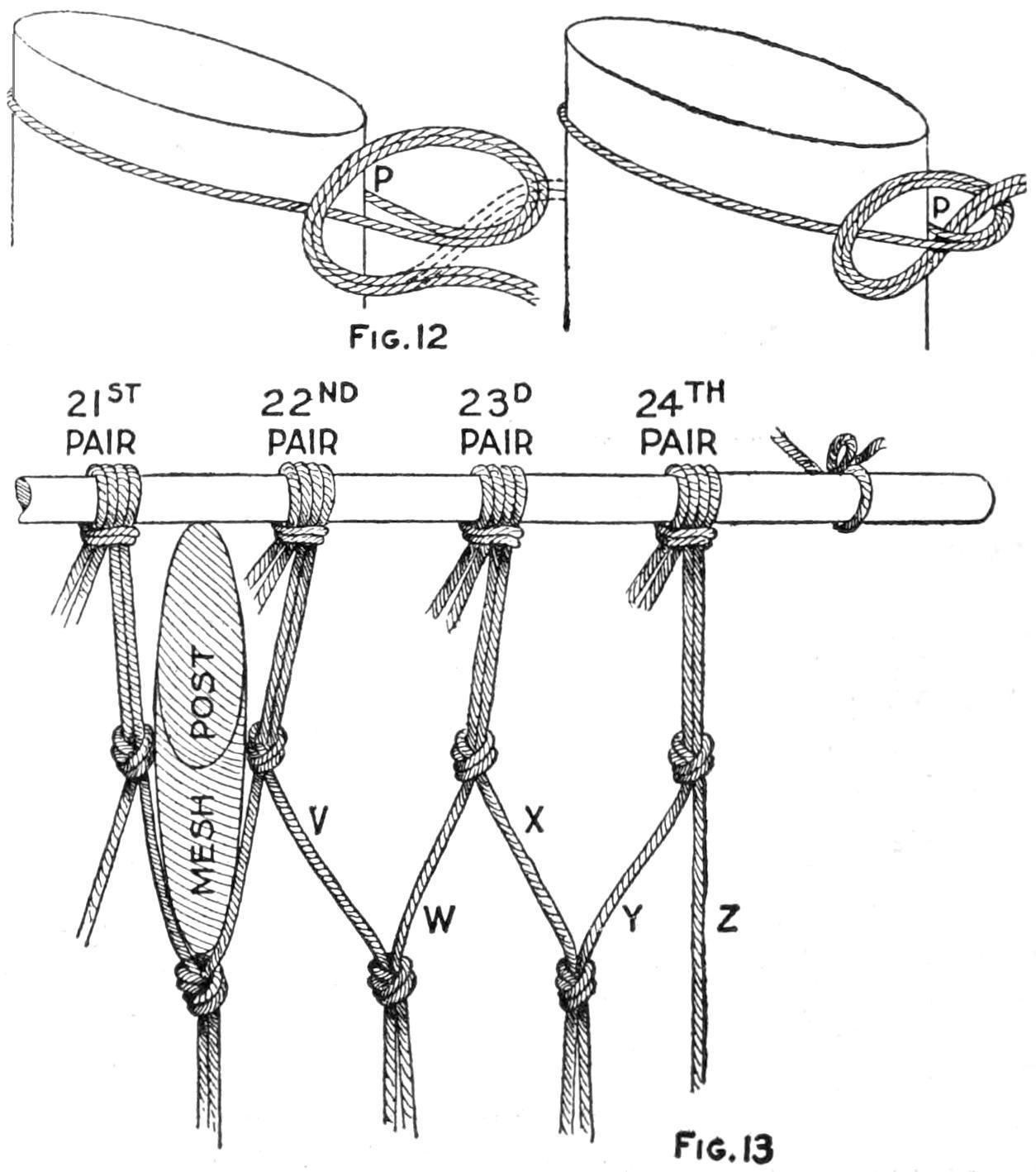
F��. 12
F��. 13
Tying the Overhand Knot and How to Run the First and Second Rows Across
Pull out the center rod, insert it in the second row of meshes, loosen the ends that were looped up and begin the knotting of the
opposite ends of the cords. When both sides are completed to within 2¹⁄₂ ft. of the ends, the center rod is removed and inserted in the last row of meshes. Another simple device will be found efficient, which consists of a board, 30 in. long, three or more inches wide and 1 in. thick, with three nails driven in slanting, as shown in Fig. 14, to prevent the ring and rod from slipping off as the tying proceeds. One 2¹⁄₂-in. galvanized ring will be required for each end. The ring is attached to the single nail at the end with a string. This will be found better than just slipping the ring over the nail, as it is necessary to have a little more play in putting the cords through for the tying. The distance from the rod to the ring should be 2 ft. The tie is made in pairs as before, one cord going under and the other over the side of the ring, using the flat reef knot. There will be a few inches of ends remaining after the tie is made and these are brought back to the main body of the cord and wound with an extra cord used for that purpose. The winding is started by looping the end of the extra cord, or string, about the whole bundle of cord together with the ends, pulling tightly and tying securely with the flat reef knot. This is illustrated in Fig. 15 The winding should be about 1¹⁄₂ in. long where the turned-back ends are cut off. Each time the cord is wound about the bundle it should be looped through its own winding and drawn tightly. This is practically the buttonhole loop. To finish the winding the cord should be given a double looping through its own winding; then with an awl, or other pointed tool, work a way through the under side of the other windings so that the end may be brought out farther back and pulled tightly, to prevent unwinding when the pull comes on the hammock. Attach the ring to the opposite end in the same manner and the hammock is complete.
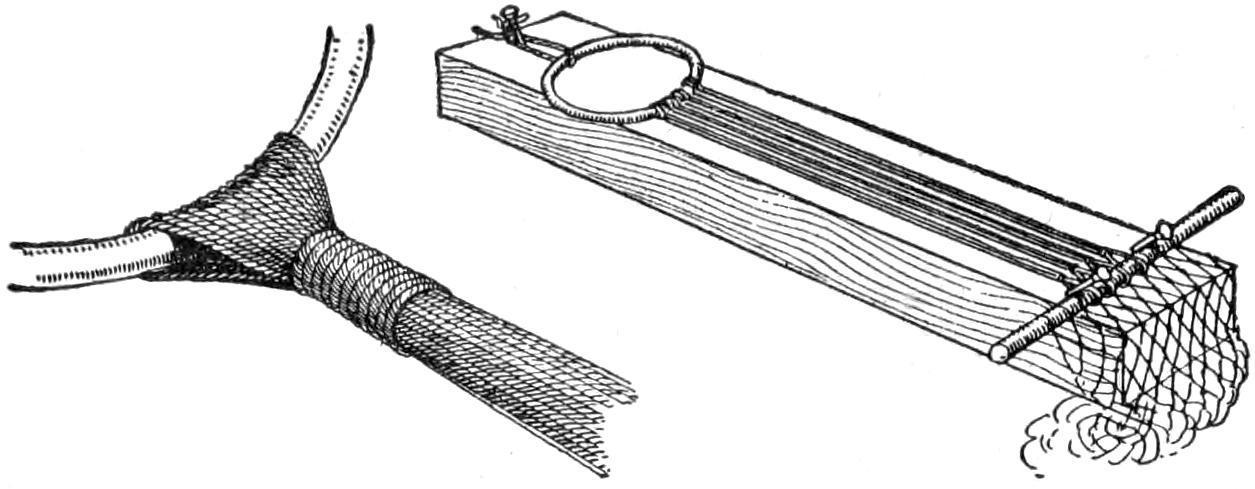
Attaching the Rings to the Ends of the Cords and the Binding near the Rings: All the Pairs of Cords are Looped about a Rod in the Center, and the Knots are Made toward the Ends
The edge can be bound the same as a tennis net, or a rope can be run through the outside meshes lengthwise, as desired. A very pretty effect can be obtained by knotting, in a similar manner to the body of the hammock, an apron fringe for the sides.
Homemade Section Liner
For the rapid and uniform hatching of cross sections this little device will be found to give results equaling most of the high-priced instruments that can be purchased. It consists of a hardwood block used in connection with a 45° triangle. The corners are cut to permit the triangle to slide the desired distance; then, by alternately sliding the triangle and block with the left hand, equal spacings can be drawn without measurements of any kind.
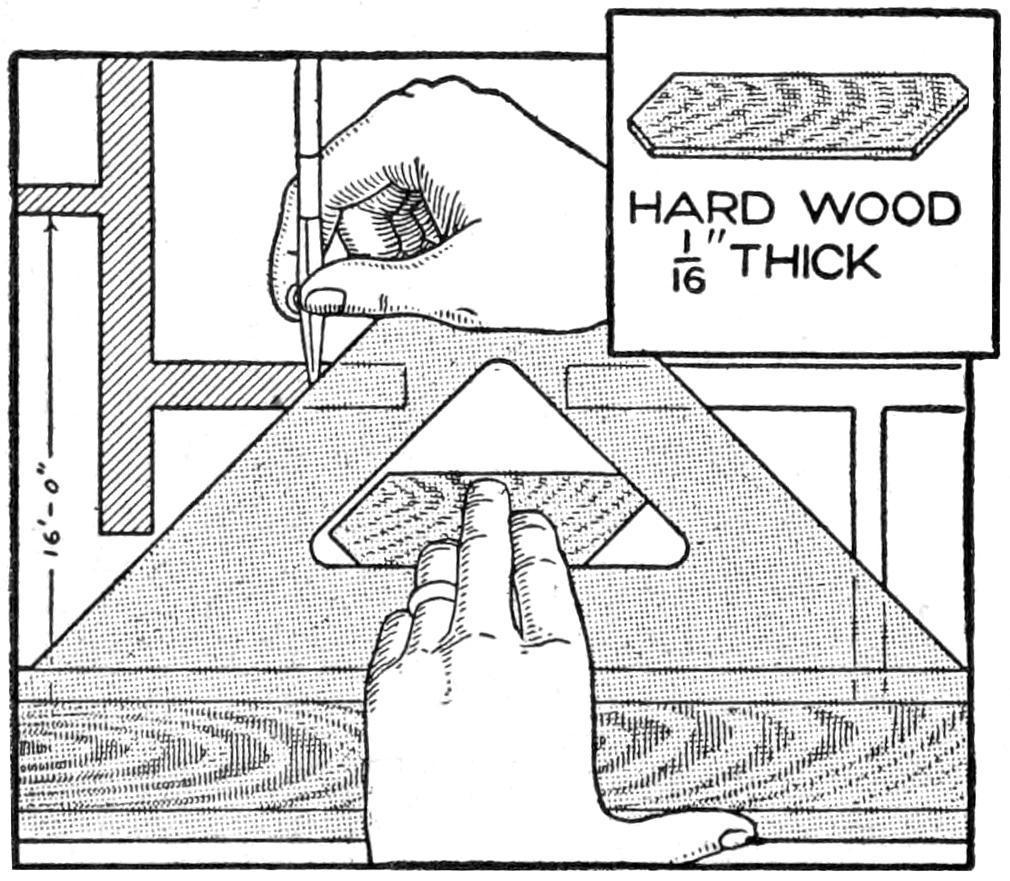
Block Used in a Triangle to Move It at Equal Distances for Making Section Lines
Two different spacings may be drawn with one block by reversing it and two blocks having a different location of the angles will give four spacings, which is about all the draftsman requires in ordinary practice. No alteration of the triangle is required with this device, and it requires but little skill to construct it.—Contributed by J. A. Shelly, Brooklyn, N. Y.
Tray Attachment for Developing Films
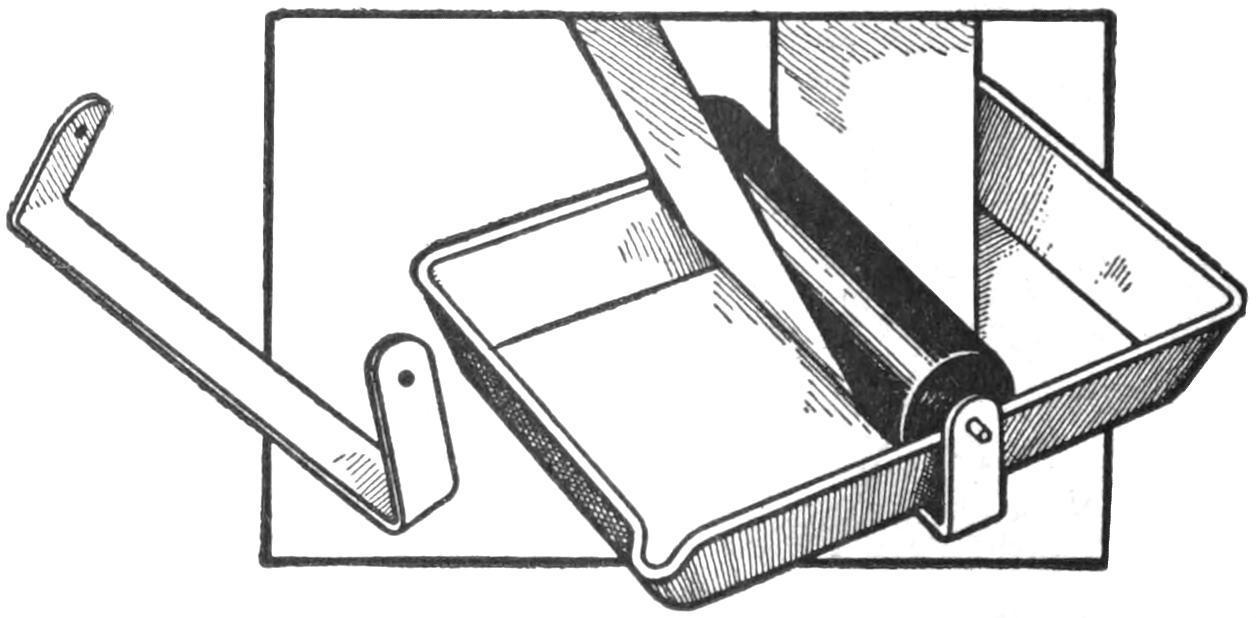
Roller Attached to Tray for Use in Developing a Full-Length Film
An ordinary tray can be used for film development, when there is no tank at hand, by the use of the attachment shown in the sketch. It consists of a strip of sheet metal, or tin, bent to fit under the tray and up on both sides to provide bearings for a roller. The roller is made of hard rubber and should be of such size that its lower surface will be under the developer in the tray. The film is drawn back and forth under this roller.
